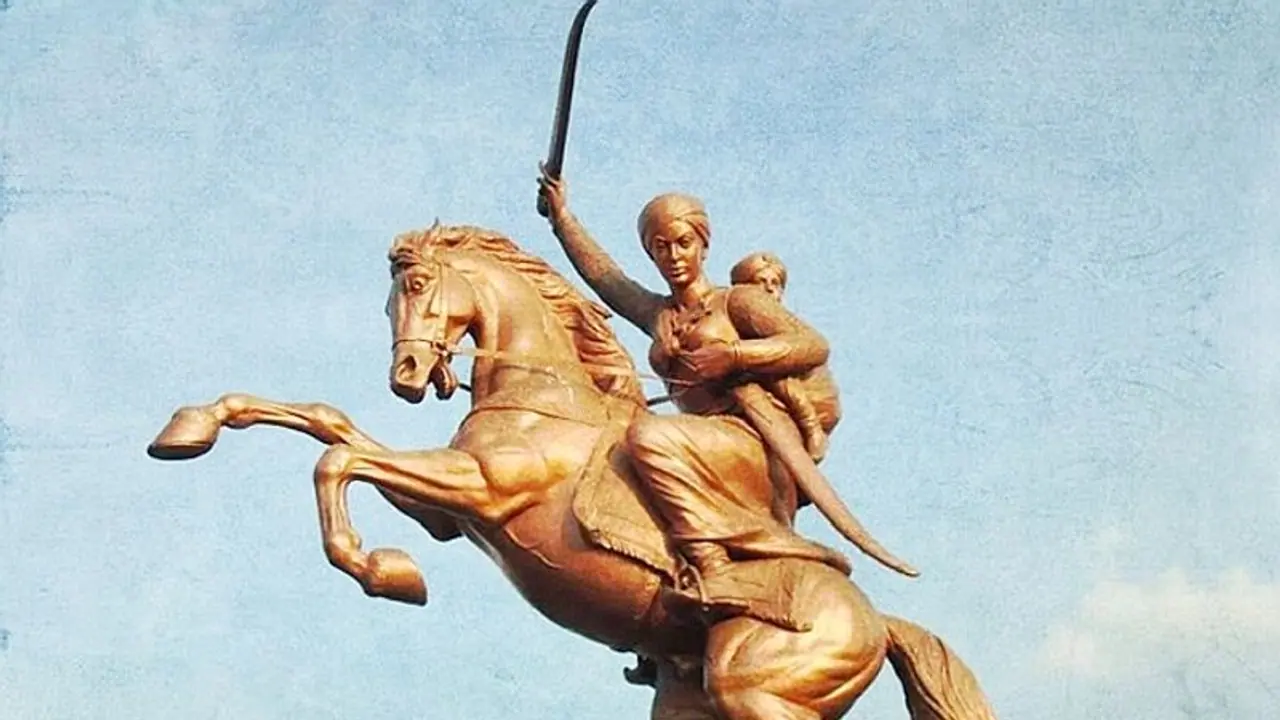Prime Minister Narendra Modi on Friday led the nation in paying tributes to Rani Lakshmi Bai on her birth anniversary
Prime Minister Narendra Modi on Friday led the nation in paying tributes to Rani Lakshmi Bai on her birth anniversary. Stating that she had a special place in the history of India, Prime Minister Modi said that her bravery will not be forgotten by generations.

Rani Lakshmi Bai: What you must know about her
* Her original maiden name was Manikarnika. She was rechristened as Lakshmi Bai when she got married to Maharaja Gangadhar Rao Newalkar of Jhansi in 1834. Her father was an advisor in the Peshwa court.
* After her mother's demise when she was aged four, Manikarnika took to the ways of the Peshwa. She learnt how to wield a sword and took training in archery, shooting and the ancient gymnastics artform Mallakhamba.
* In in 1851, she gave birth to a boy who passed away four months later. The couple then adopted Rao's cousin's son, Anand Rao (later renamed as Damodar). in 1853, her husband passed away due to an illness. The British saw this as an opportunity to invoke the Doctrine of Lapse wherein a ruler's adopted son could not be proclaimed as the kingdom's heir. Lakshmi Bai challenge the British contention legally in vain and was granted an annual pension of Rs 60,000 until the great revolt of 1857 erupted.
* During the 1857-58 mutiny, Lakshmi Bai resisted the British East India Company forces strongly for two weeks but was forced to vacate the city along with her trusted aides. She along with Tantia Tope and Nana Sahib went on the mount a successful assault on the fortress of Gwalior in Madhya Pradesh. In his notes, Sir Hugh Rose, who led the British forces against Laxmi Bai, termed her a man among mutineers.
* She met her end on June 17, 1958, when the British managed to corner her on the battlefield. She died fighting in the battle of Kotah-ki Sarai. Her's tomb is situated in Gwalior's Phool Bagh area. In his report, Sir Hugh Rose summed up that she was remarkable for her bravery, cleverness, and perseverance. Stating that her generosity to her subordinates was unbounded, Rose noted that these qualities, combined with her rank, made her the most dangerous of all the rebel leaders.
Also Read
China built 4 new villages inside Bhutan: Why India should be worried and act now
The UAV swarm that will redefine India's future wars (WATCH)
